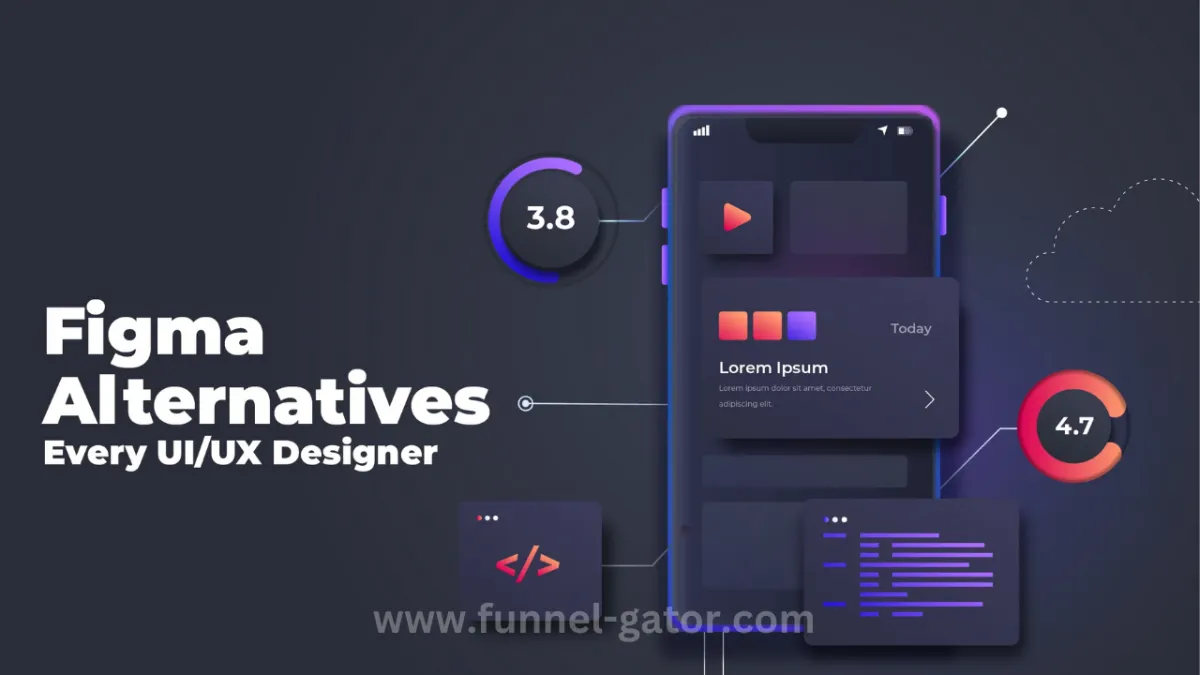
Top Figma Alternatives for UI/UX Design in 2025 (With Easy-to-Follow Guide)
If you've ever dabbled in UI/UX design, chances are you've come across Figma—a powerful, cloud-based design tool loved by many for its collaboration features. But just like any other product, Figma isn't perfect for everyone. Maybe you're looking for something more budget-friendly, or perhaps you need a tool that works better offline. Whatever your reason, the good news is this: there are several excellent Figma alternatives out there.
In this article, we’ll walk you through some of the best alternatives to Figma, explain why you might need one, and help you pick the right tool for your design journey. We’ll also throw in some real-life stories, tips, and links to help you dive deeper into each option.
Why Look for a Figma Alternative?
Let’s start with a story.
"When I first started freelancing, I loved Figma. But after a few projects, I realized I needed something that didn’t rely so much on the internet. I was often designing from remote areas during travel. That’s when I started exploring other tools—and it made a huge difference!"
You're not alone. Designers look for Figma alternatives for many reasons:
Pricing: Figma’s free tier is generous, but its premium plans can get pricey.
Offline access: Figma needs a stable internet connection.
Feature limitations: Some users want more advanced animation or prototyping tools.
Interface preferences: Some designers just prefer a different workflow.
1. Sketch – The Pioneer of UI Design Tools
Sketch is a well-known name in the design world. It was the go-to design tool before Figma took over.
Why Choose Sketch?
Native macOS experience – It feels incredibly smooth on Apple devices.
Offline capabilities – Unlike Figma, you can work without the internet.
Plugin ecosystem – Thousands of plugins to extend functionality.
One-time license – Ideal for people who don’t like subscriptions.
👉 Ideal for: Designers who love working offline and prefer native apps.
“I used Sketch during a 10-hour flight to Tokyo. No Wi-Fi, no problem. My designs were ready before landing.”
2. Adobe XD – Seamless Integration with Creative Cloud
Adobe XD is a strong contender, especially for those already using Adobe Creative Cloud.
What Makes Adobe XD Stand Out?
Deep integration with Photoshop, Illustrator, and other Adobe tools.
Responsive design support for different screen sizes.
Voice prototyping for more immersive experiences.
Offline design and prototyping – Yes, no internet needed.
👉 Best for: Creative professionals who already use Adobe products.
“I design in XD and polish visuals in Photoshop. It’s all in one place!”
3. Penpot – Open-Source & Free Forever
Penpot is one of the most exciting Figma alternatives because it’s completely free and open-source.
Why People Are Switching to Penpot:
Collaborative interface like Figma.
Runs in the browser (also offers self-hosted options).
100% free – great for startups and individual creators.
Growing community of developers and designers.
👉 Perfect for: Teams that value open-source tools and have budget constraints.
“We saved $1,200/year by switching to Penpot. For a small business, that’s huge!”
4. Framer – The Designer's Playground for Interactions
Framer lets you build high-fidelity prototypes that actually feel like real apps. It combines design and code in a beautiful way.
Standout Features:
Smart animations and transitions.
Code support (React) for more control.
Live collaboration just like Figma.
Works great with product teams.
👉 Ideal for: Designers who want to go beyond static mockups and build interactive experiences.
“Our client was blown away when we demoed a fully functional prototype—built only in Framer.”
5. UXPin – The Bridge Between Design and Development
UXPin is a powerful design tool that brings design and engineering closer together.
Key Features:
Design with real components using React libraries.
Conditional logic and forms for more realistic prototypes.
Accessibility features out of the box.
Version control and documentation tools for teams.
👉 Great for: Product teams working closely with developers.
“Our developers stopped guessing. UXPin’s dev-ready code made handoffs smoother than ever.”
Step-by-Step Guide: How to Choose the Best Figma Alternative
If you’re feeling overwhelmed, here’s a simple checklist:
✅ Step 1: Define Your Needs
Are you designing alone or in a team? Do you need offline access? What’s your budget?
✅ Step 2: Try Free Plans or Trials
Most tools listed offer free versions. Try Adobe XD or Penpot before committing.
✅ Step 3: Evaluate Collaboration Needs
Do you work with developers? Then UXPin or Framer might be a better fit.
✅ Step 4: Think Long-Term
Choose a tool that will grow with your workflow and team.
Bonus: Tools Worth Mentioning
InVision – For simple prototyping and collaboration.
Lunacy by Icons8 – Free design software that works offline (Windows, macOS, Linux).
Gravit Designer – Another good browser-based tool with offline support.
Final Thoughts
Choosing the right Figma alternative can feel overwhelming, but it really comes down to your needs, team setup, and budget. Each tool we mentioned here offers something unique—some are better for developers, others shine in animation or collaboration.
If you’ve outgrown Figma or just want to try something new, now is the perfect time to explore. Many of these tools have improved drastically in the past year, offering exciting features that might suit your style even better.
So go ahead, try a few, and design with confidence!
TL;DR: Best Figma Alternatives



